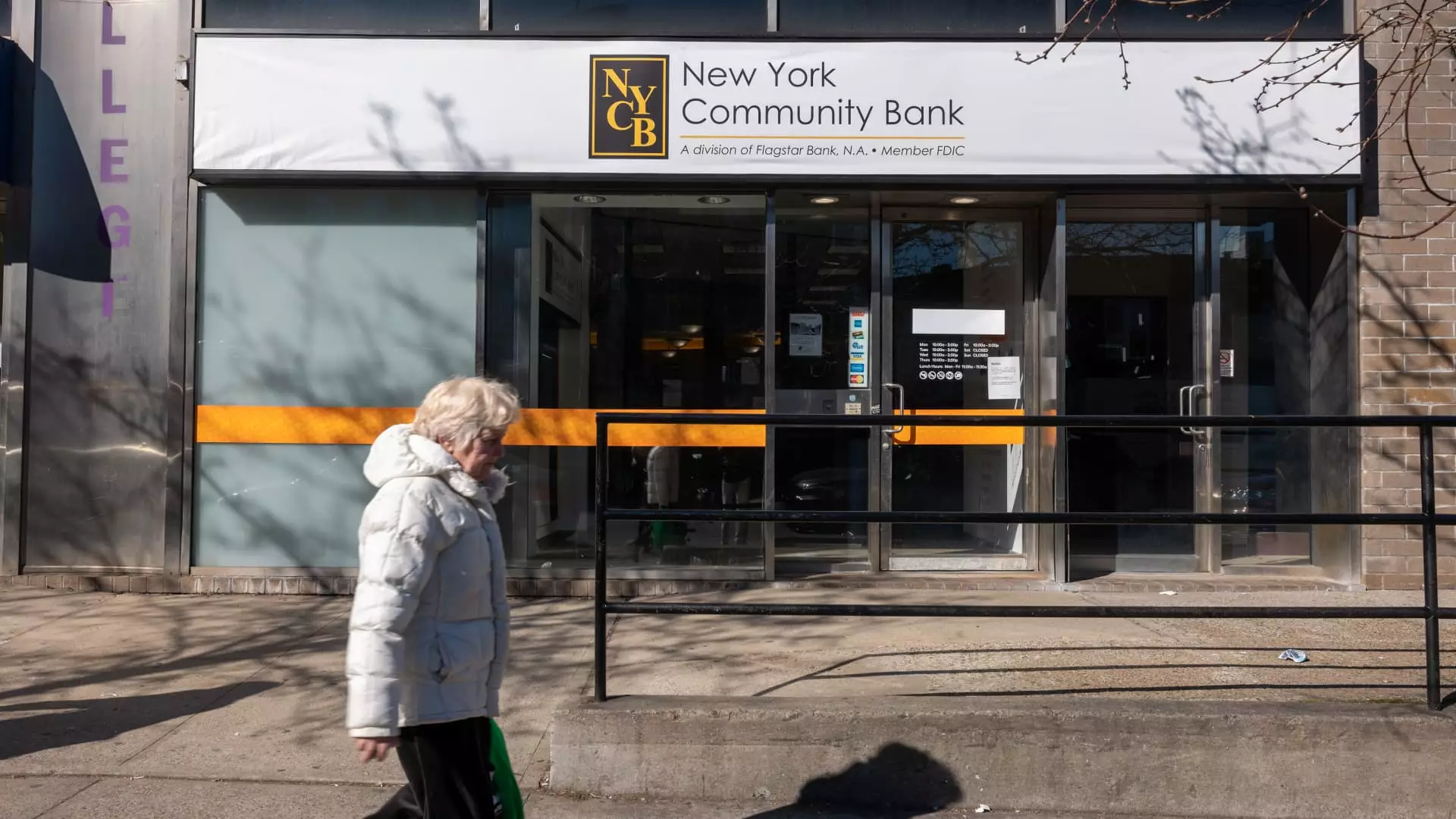New York Community Bank (NYCB) has recently faced significant financial struggles, requiring a hefty lifeline of over $1 billion last month. Despite this, the bank is now offering the highest interest rate in the country for a savings account, standing at an annual percentage yield of 5.55%. Analyst Ken Tumin highlights that this rate is higher than any other bank’s widely available account. However, he also suggests that this aggressive rate may be a sign of funding pressure for NYCB. The online arm of NYCB, My Banking Direct, has been in existence for over a decade, yet the sudden increase in rates could indicate a desperate need for funding.
NYCB’s troubles began earlier this year when they announced greater losses on commercial real estate loans than anticipated. This led to a decrease in the bank’s stock price, downgrades from rating agencies, and changes in management. The capital injection from investors, led by former Treasury Secretary Steven Mnuchin’s Liberty Strategic Capital, was announced on March 6 in an attempt to stabilize the situation. Despite this rescue, NYCB lost 7% of its deposits in the month leading up to the announcement. The total amount of deposits fell to $77.2 billion by March 5, presenting a challenging scenario for the bank.
During a post-rescue conference call, analysts questioned how NYCB managed to retain a significant portion of its deposits during the turmoil. Chairman Sandro DiNello emphasized that the bank did not resort to extreme measures in deposit pricing to maintain numbers. However, the bank’s funding strategy remains unclear as they have not provided a comment on this matter. The appointment of Joseph Otting as the new CEO came shortly before the rate increase, signaling a potential shift in leadership amidst ongoing challenges.
NYCB’s decision to offer a rate above 5% sets them apart from other established banks in the industry. While the average high-yield savings rate among prominent banks hovers around 4.4%, NYCB’s rate surpasses this benchmark. In contrast, newer or smaller players tend to offer higher rates, indicating a different strategy to attract customers. The accounts provided by My Banking Direct are insured by the FDIC, ensuring customers’ deposits up to $250,000 in the event of a financial crisis.
As savings account rates have been increasing over the past few years, banks have faced tougher competition and are compelled to pay higher rates for deposits. This trend is particularly evident among smaller banks that need to compete with larger institutions like JPMorgan Chase. Matt Stucky, chief portfolio manager for equities at Northwestern Mutual, suggests that banks resort to advertising higher rates when they encounter deposit problems. This shift in the banking landscape highlights the challenges faced by financial institutions in maintaining stability and attracting customers.
The journey of New York Community Bank reflects the volatile nature of the banking sector and the constant struggle to strike a balance between financial sustainability and customer retention. The high-interest rates offered by NYCB signify a proactive approach to address funding issues, yet the underlying challenges within the bank remain unresolved. As the industry continues to evolve, it is crucial for banks to adapt to changing market dynamics and consumer preferences to ensure long-term success and stability.

